The Science Behind Yellowstone’s Rainbow Hot Spring
The Grand Prismatic Spring might seem photoshopped, but there’s very real science beneath its vibrant colors
It's not hard to find natural wonders within Yellowstone National Park, but the park's largest hot spring might be the most remarkable, and not just for its size: dubbed the Grand Prismatic Spring, the hot spring radiates extremely hot water—and stunning prismatic color—from its center.
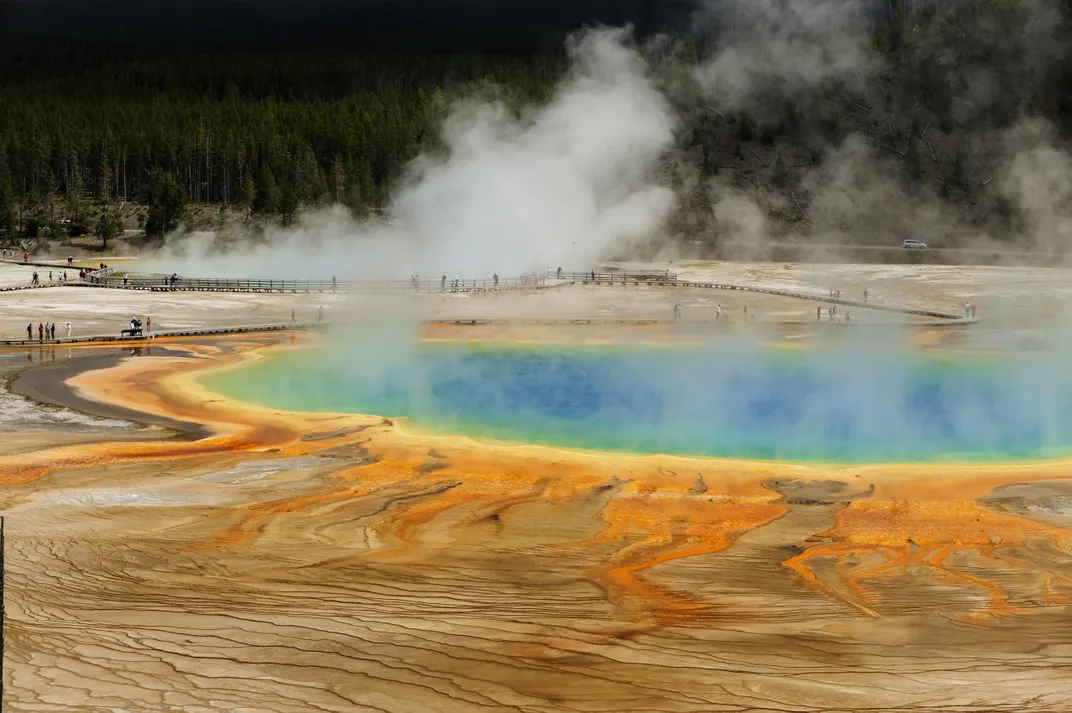
Don't adjust your color settings—the Grand Prismatic Spring really is rainbow colored, following the spectrum of white light through a prism (red to blue). The spring was first officially described, and named, by the Hayden Expedition in 1871, which was the first federally-funded exploration of what became Yellowstone. The expedition's leader, Ferdinand Hayden, wrote:
Nothing ever conceived by human art could equal the peculiar vividness and delicacy of color of these remarkable prismatic springs. Life becomes a privilege and a blessing after one has seen and thoroughly felt these incomparable types of nature's cunning skill.
But what causes the hot spring's magnificent coloration? It's all thanks to the heat-loving bacteria that call the spring home.
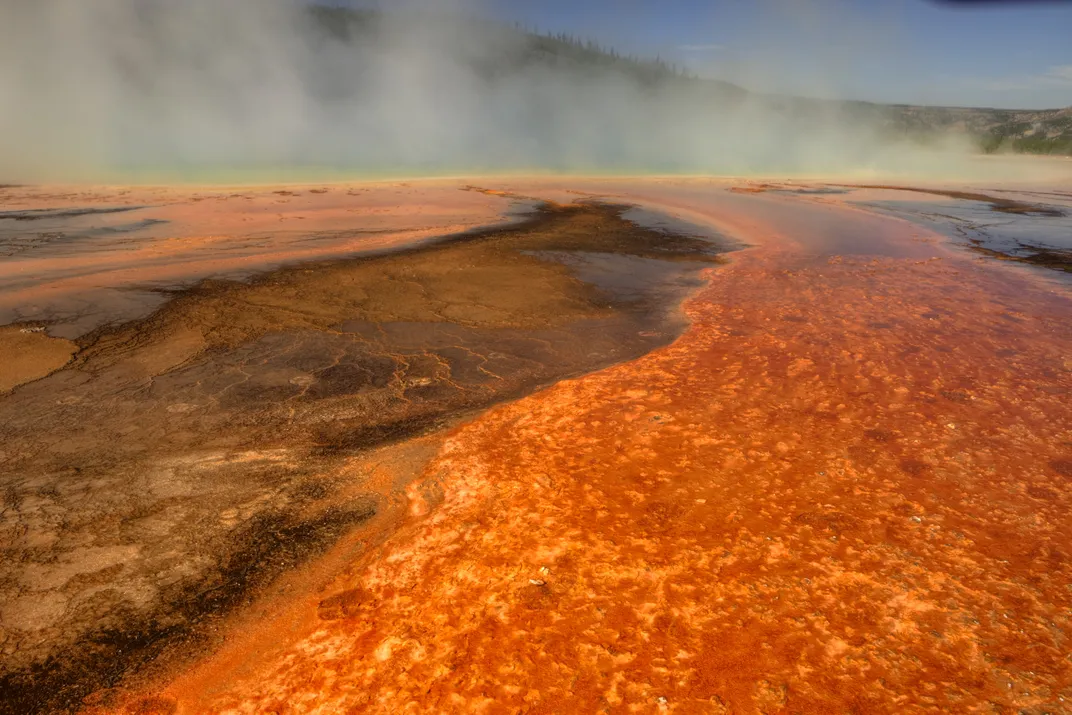
Hot springs form when heated water emerges through cracks in the Earth's surface. Unlike geysers, which have obstructions near the surface (hence their eruptions), water from hot springs flows unobstructed, creating a nonstop cycle of hot water rising, cooling and falling. In the Grand Prismatic Spring, this constant cycle creates rings of distinct temperatures around the center: very, very hot water bubbles up from the middle and gradually cools as it spreads out across the spring's massive surface (370 feet across).
Water at the center of the spring, which bubbles up 121 feet from underground chambers, can reach temperatures around 189 degrees Fahrenheit, which makes it too hot to sustain most life (some life does manage to exist, but its limited to organisms that feed off of inorganic chemicals like hyrdogen gas). Because there's very little living in the center of the pool, the water looks extremely clear, and has a beautiful, deep-blue color (thanks to the scattering of blue wavelengths—the same reason oceans and lakes appear blue to the naked eye). But as the water spreads out and cools, it creates concentric circles of varying temperatures—like a stacking matryoshka doll, if each doll signified a different temperature. And these distinct temperature rings are key, because each ring creates a very different environment inhabited by different types of bacteria. And it's the different types of bacteria that give the spring its prismatic colors.
Within these rings live different organisms, including cyanobacteria, a type of bacteria that obtain their energy through photosynthesis. Look at the first band outside of the middle—see that yellow color? That's thanks to a particular type of cyanobacteria, Synechococcus, that lives in that particular temperature band under extreme stressors. The temperature of that water is just barely cool enough to be habitable, at 165° F, but the bacteria prefer temperatures nearer to 149° F. But an abundance of light also introduces stress to the Synechococcus habitat.
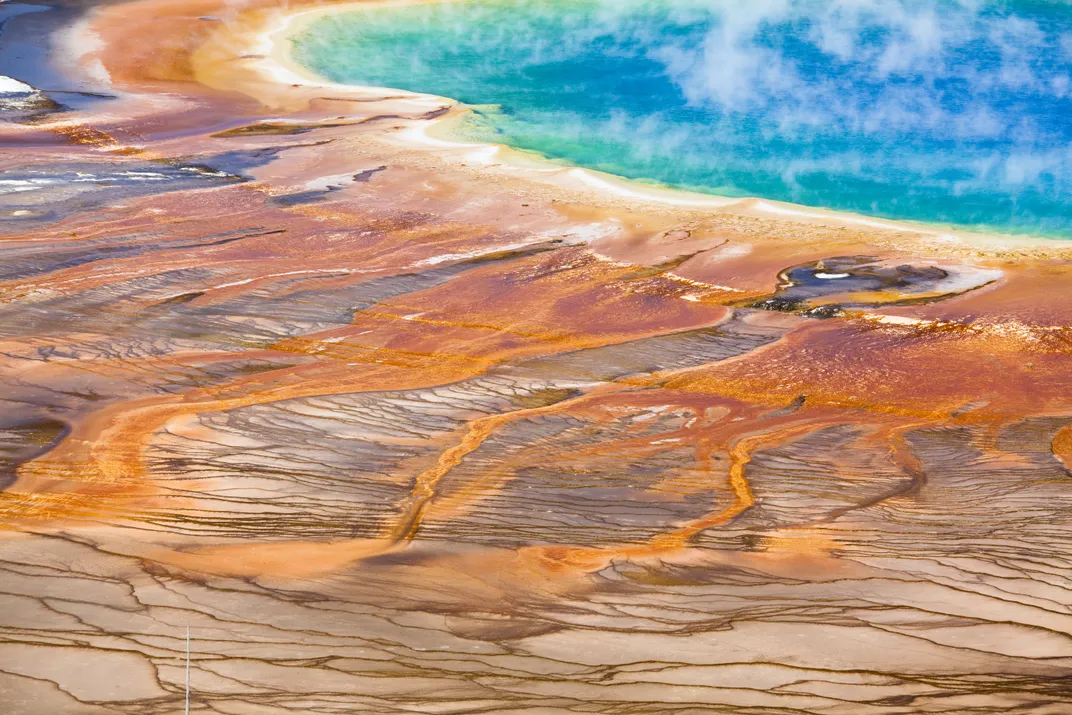
The area around the Grand Prismatic Spring is virtually void of trees, or any kind of shade. That's not just a problem for tourists, it's also a challenge for Synechococcus. There's no escaping the sun, and at the high elevation of Yellowstone, the ultraviolet light from the sun's rays becomes extremely, extremely harsh.
But even though they're living in too exposed and too hot water, Synechococcus manage to survive, through a balance of photosynthetic pigments—chemical compounds that reflect only certain wavelengths of visible light, making them appear various colors. The primary pigment for photosynthesis is chlorophyll, which we see as green. But chlorophyll levels can, at times, be surpassed by an accessory pigment known as carotenoids. Carotenoids are red, orange or yellow; the yellow of Synechococcus is exactly the same pigment, beta-Carotene, that in high concentrations makes the orange we see in carrots.
Carotenoids protect Synechococcus cells from extreme sunlight, by capturing harsh wavelengths (like ultraviolet) and passing that energy to chlorophyll pigments, which then convert light energy into chemical energy. So, since the Synechococcus living in the yellow temperature band live under harsh conditions, they produce more carotenoids than they would if they were living in optimal temperature conditions (like in the outer rings), giving the band its yellow color. If you were to skim a small amount of the Synechococcus off of the top of that temperature band, or find Synechococcus living where there is less harsh sunlight, the Synechococcus would look more like the blue-green algae we're used to seeing in lakes and ponds elsewhere. Since Synechococcus' color is so dependent on sunlight, it also means that in the winter, when the sun is less harsh, the bacteria produce fewer carotenoids, and therefore look less yellow, and more blue-green.
Moving outward from the yellow band, the temperature of the hot spring begins to cool, and as the temperature cools, a more diverse set of bacterial life can flourish. Synechococcus still live in the orange band (which is around 149 degrees Fahrenheit), but they're joined by another type of bacteria, known as chloroflexi bacteria. Some chloroflexi bacteria are also photosynthetic, but produce energy using different types of chlorophyll and different types of carotenoids, which manifest as slightly different colors. The net result of this color diversity is the orange color that you see in pictures—it's not that every bacterium manifests as orange individually, but that the composite color of all the different bacteria seen together is orange. And that orange color, like the yellow in the ring next to it, comes from carotenoids, which these bacteria produce to help shield themselves from the harsh light of Yellowstone's summer sun.
The outermost ring is the coolest, at around 131°F, and home to the most diverse community of bacteria. As even more organisms are able to live in the outermost ring, the mix of their various carotenoids produces the darkest color of all—the kind of red brown that you see in the photos.
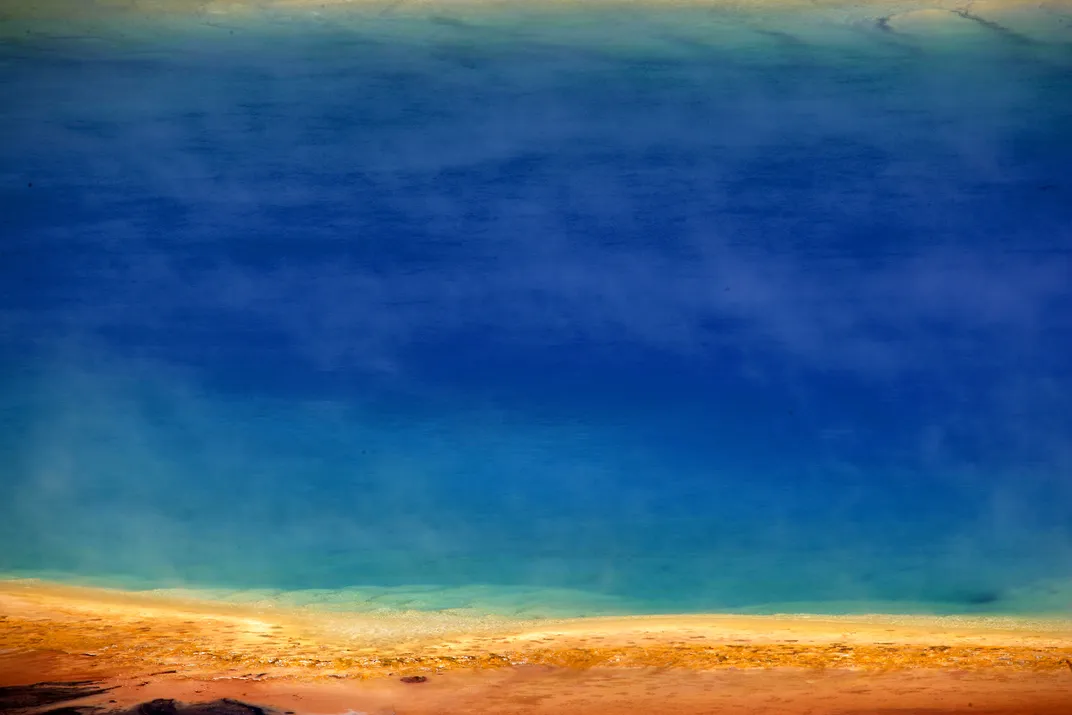
To view the Grand Prismatic Spring while in Yellowstone, head to the Midway Geyser Basin, about half-way between the Madison and Old Faithful regions of the park. From the parking lot there, take the trail south toward the Firehole River. The path will lead you alongside the hot spring, but for a truly spectacular view of the spring's colors, get some height. Try hiking up to the Midway Bluff, which offers a sweeping view of the Midway Basin and the hot spring below.
/https://tf-cmsv2-smithsonianmag-media.s3.amazonaws.com/accounts/headshot/natasha-geiling-240.jpg)
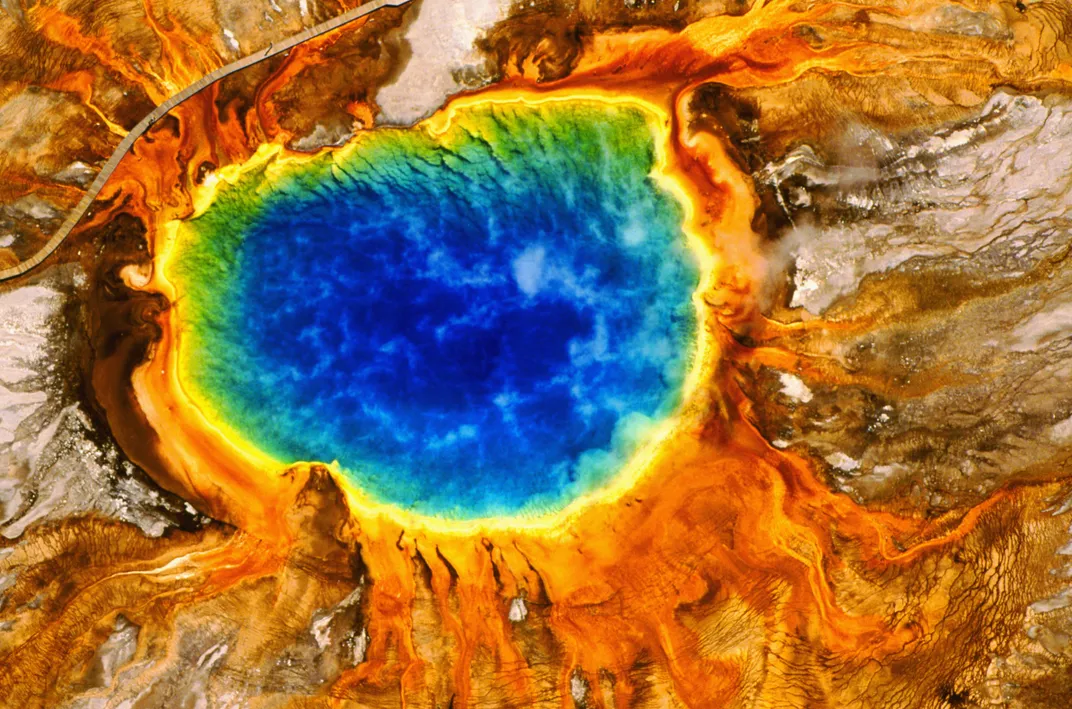
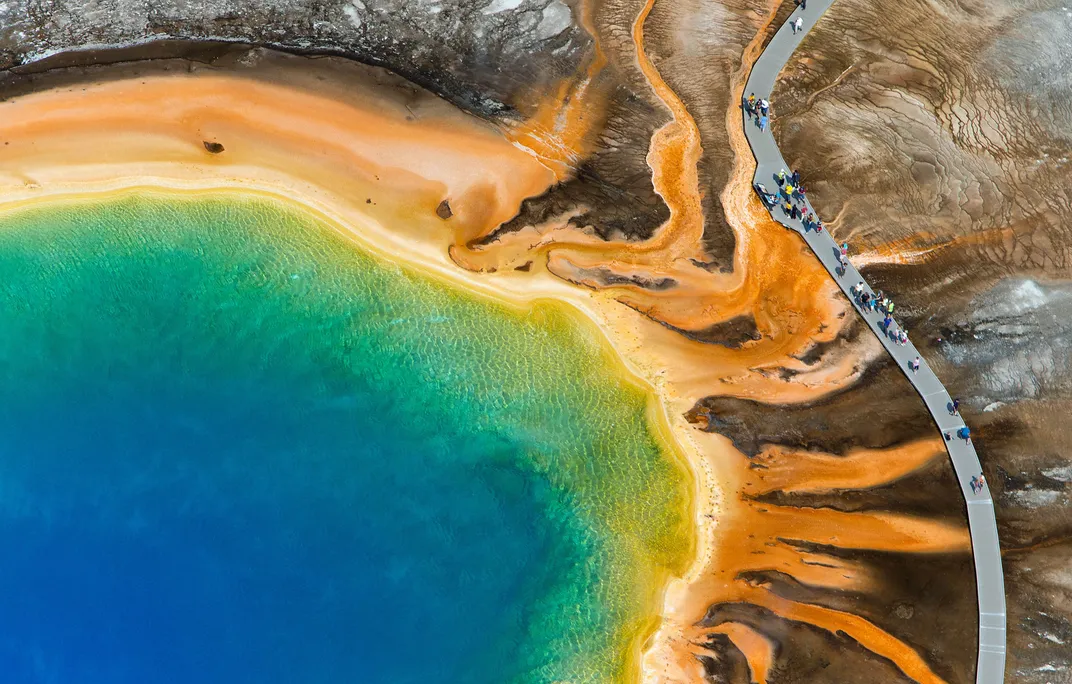
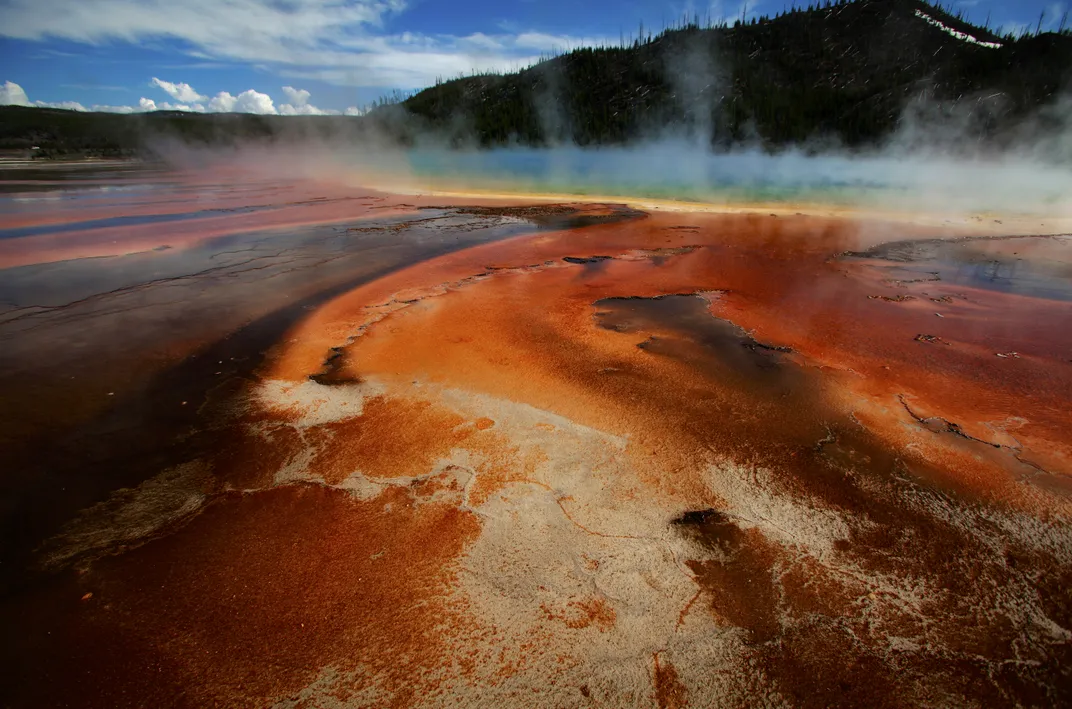
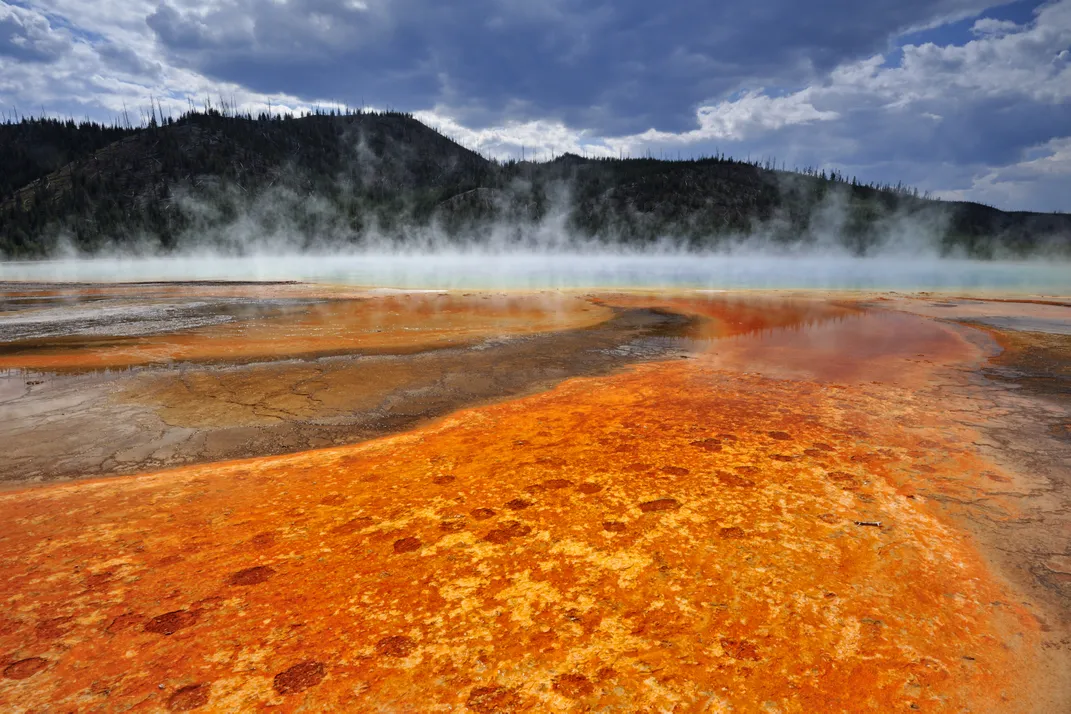
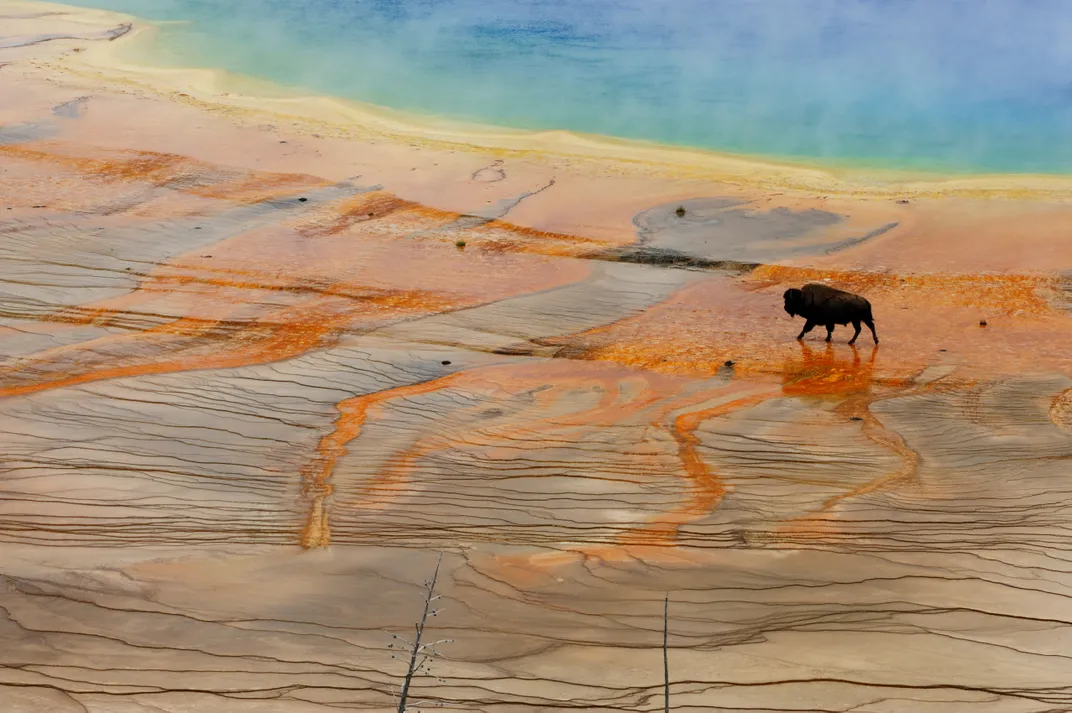
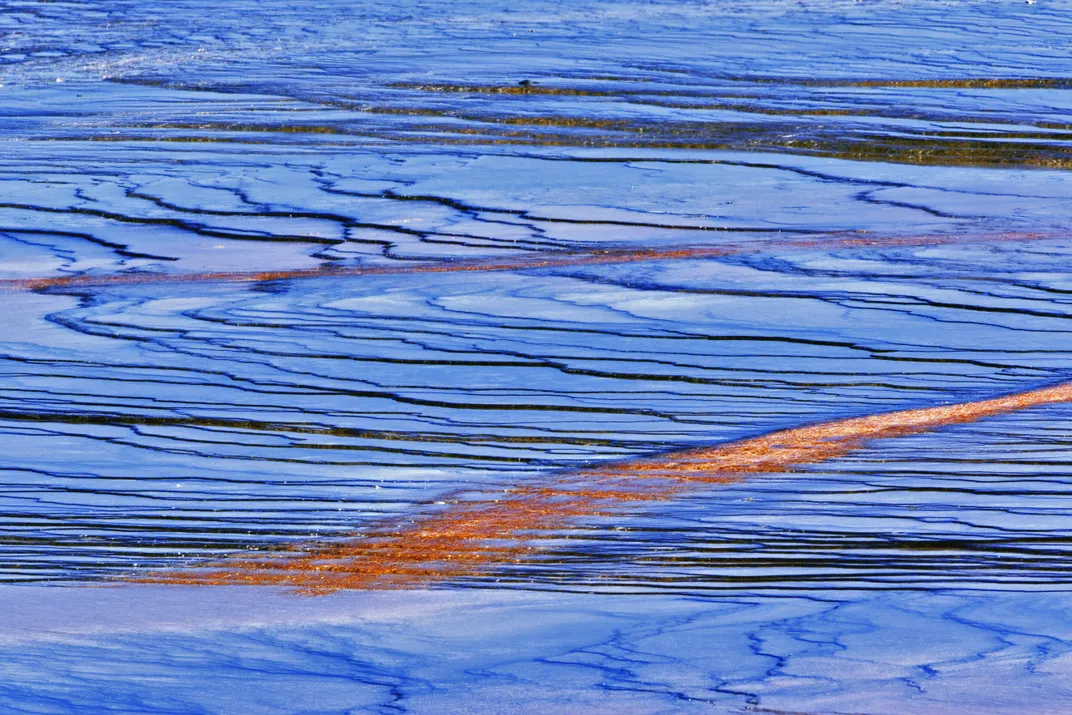
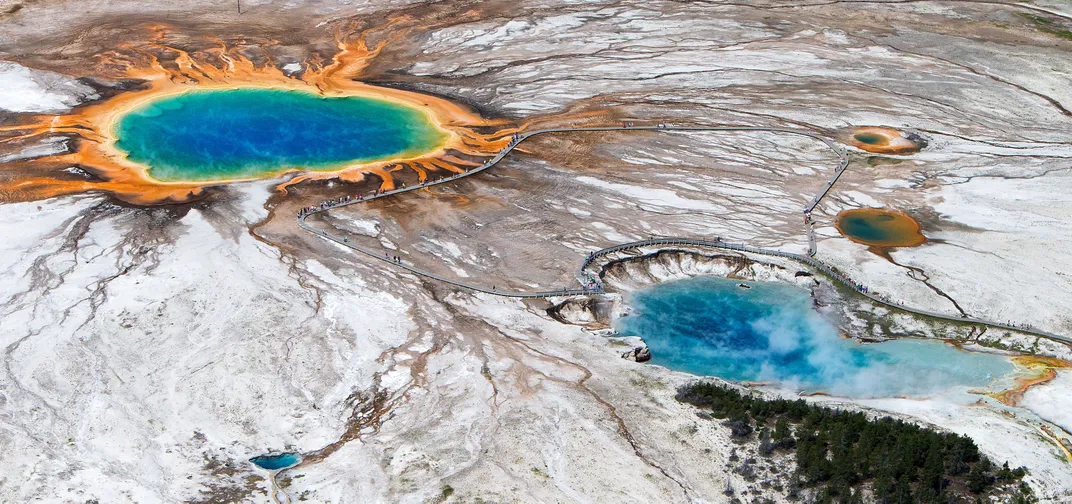
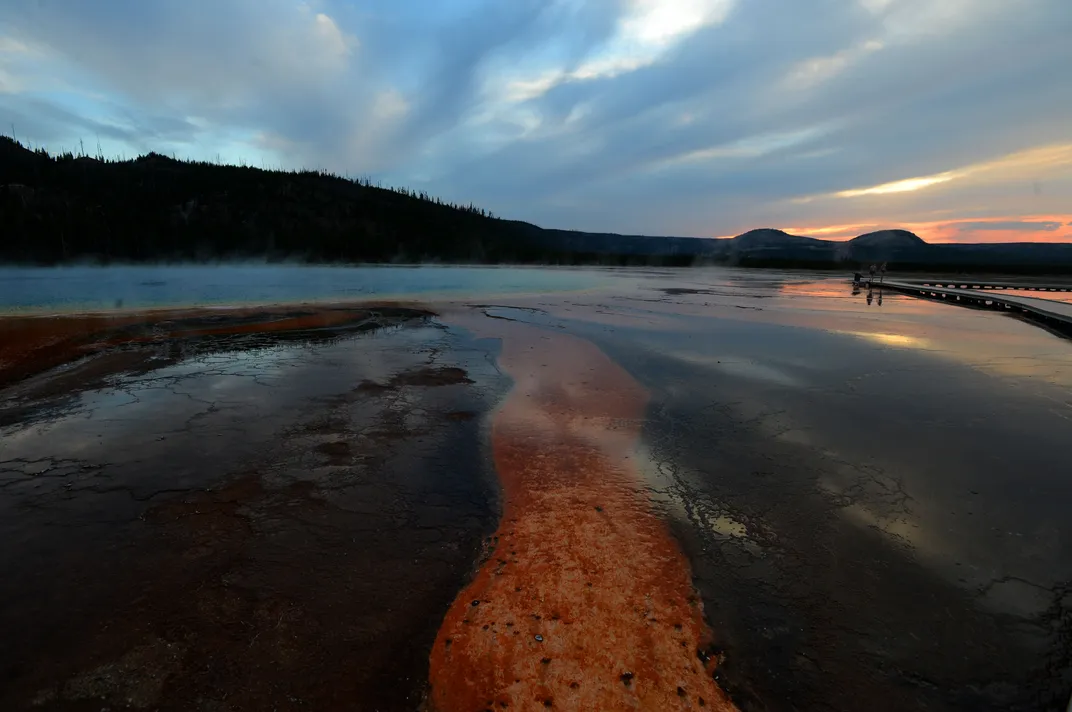
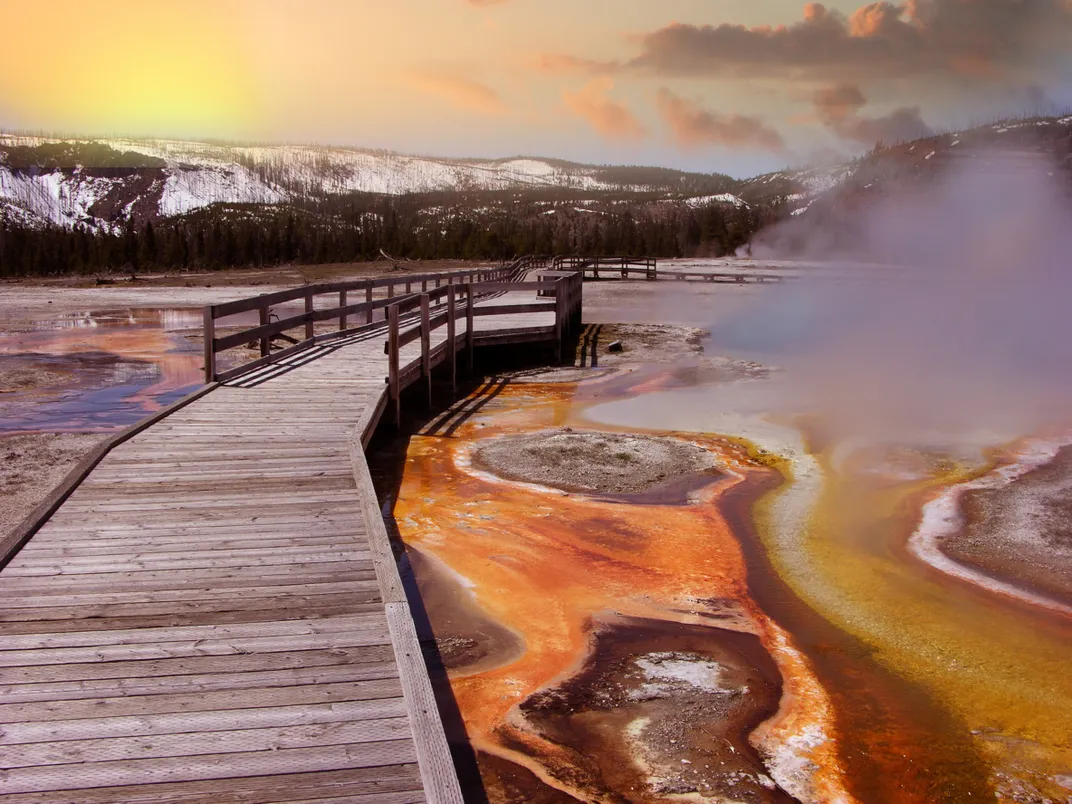
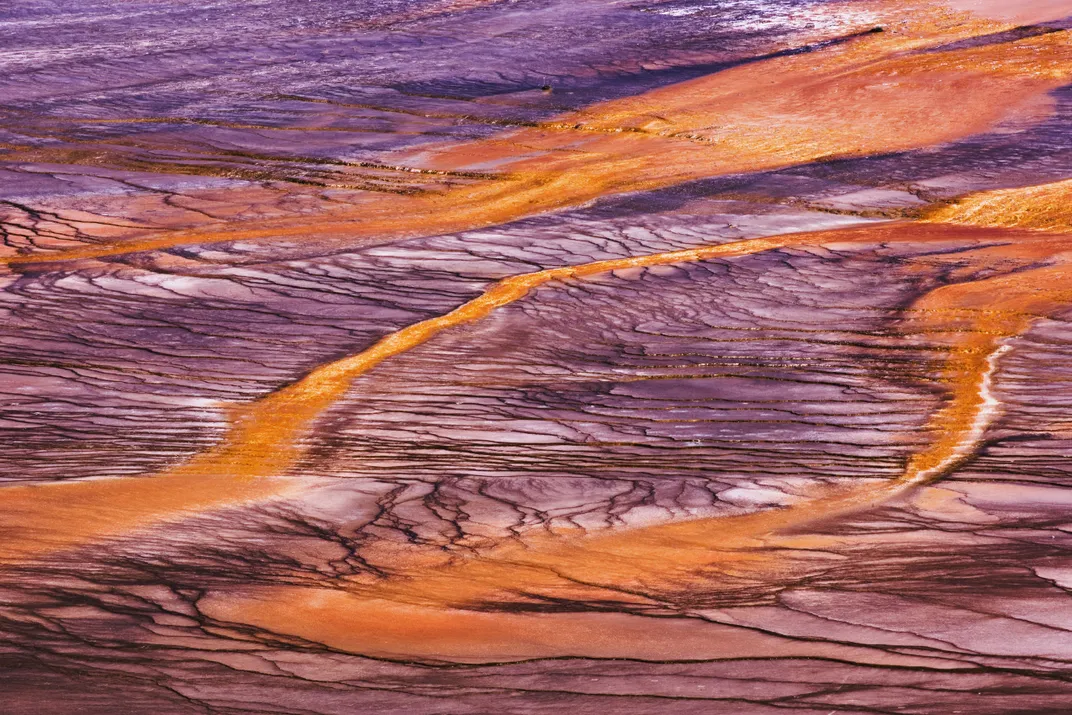
/https://tf-cmsv2-smithsonianmag-media.s3.amazonaws.com/accounts/headshot/natasha-geiling-240.jpg)